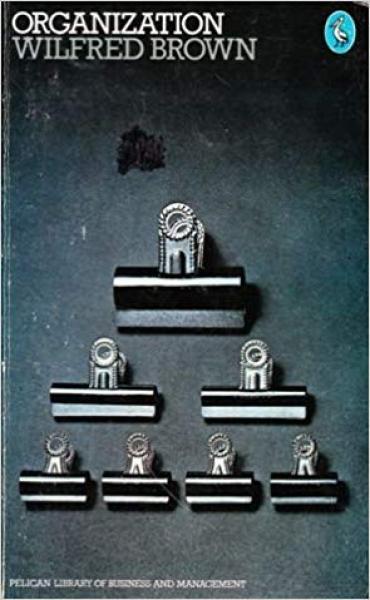Organization
FREE DOWNLOAD

Obtain this book
To download a digital copy of this book for free
You need to register for a free GO Society web site account if you don't already have one at https://globalro.org/user/register. Then log into your account at https://globalro.org/user/login. Next, return to this page and you will be able to see and download the file.
This E-Book is presented in PDF format and is downloadable in two PDF formats...
Word/Phrase Searchable:
Part1: 8.1 MB - 169 pages
Part2: 6.1 MB - 118 pages
Part3: 6.8 MB - 134 pages
Non-Searchable:
Part1: 3.4 MB - 169 pages
Part2: 2.2 MB - 118 pages
Part3: 3.1 MB - 134 pages
Originally published: 1971 by Heinemann Educational Books Ltd, London, UK ISBN 0 435 85103 9
This book presents a new, coherent, and practical approach to management problems at all levels. Ranging from the day-to-day issues of the factory and the office to a basic reappraisal of national policy on wages, it could well prove to be the starting point for a fundamental change in attitude towards industrial relations.
The book is infused with the author’s belief in humanity. He is convinced that the behaviour of people at work is largely conditioned by their organizational environment. What is needed to reduce dissension and to increase efficiency and enjoyment at work is not a change of human nature but an improvement of that environment. This is what the present book sets out to do.
The four parts of the book cover quite distinct aspects of organization and may be read independently.
Part One, 'The Anatomy of Employment Systems', displays the philosophy of the book and defines the roles, institutions, and systems which make up employment hierarchies.
Part Two, 'Power Groups, Participation, and Wage Differentials', describes systems for resolving the conflicting demands of shareholders, of the market, and of employees representatives. It concludes with an outline of the author’s radical proposals for a new national legislative body for regulating wage differentials.
Part Three, 'Operational Work and Techniques', examines the relationship between Product Design, Manufacture, and Marketing to show how these basic functions can best be co-ordinated to produce maximum efficiency and profitability.
Part Four, 'Personnel Work and Techniques' introduces methods for assessing performance, selecting personnel, rating, and grading.
Because it deals with such fundamental ideas, stated in such simple language, this book can be read by anyone carrying out managerial responsibilities - whether industrial, governmental or professional. For those many managers in rapidly expanding organizations, who are becoming aware that they are concerned with a complex organism, it will offer fresh insights and well-proven techniques, to enable them to tackle their problems with success.




